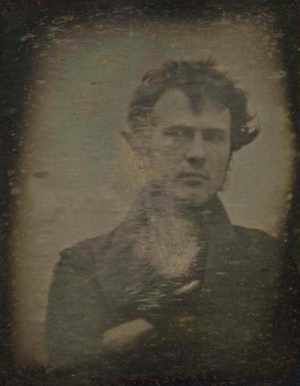At a flea market today I found the most incredible thing.
A "Scientific Planchette" Manufactured by "Selchow & Righter."
THE SCIENTIFIC PLANCHETTE.
__________________
From the Original Pattern
First Made in 1860. (IMPROVED.)
HOW TO WORK PLANCHETTE:
Place Planchette on a sheet of paper [printing or wrapping will answer,] then place the hand lightly on the board; in a few minutes it begins to move and is ready to answer mental or spoken questions. When a party of three or more come together, it is almost impossible that one cannot operate Planchette. If one be not successful, let two try it together. That Planchette is capable of giving a large amount of amusement, is beyond doubt, nor is it less likely to afford instruction and a wide field for speculation and experiment to the scientific.
SELCHOW & RIGHTER
Manufacturers, New York.
That is really the only information on the item or the box. Since it says it was First made in the 1860s but has been improved I can safely assume it was produced before the Turn of the Century.
Admittedly I don't know much about these. So I did a quick internet search and came across the "Museum of Talking Boards." My exact model wasn't featured, but a similar Selchow & Righter one was:
This is a particularly fine example of a pretty maple automatic writing writer circa 1875 by Selchow and Righter. The instructions state that Planchette the Mystic of Mystics is the "scientific planchette from the original pattern, first made in 1860." Although the phantasms on the front of the box are obviously not of this world, there is no mention of spiritual communion of any kind.
Judging by the ornate illustrations on the cover I bet the one they have featured is a new model than mine.
Selchow and Righter were a 19th century game manufacturer from Bay Shore, New York.
While the company is probably best known for producing Parcheesi and Scrabble, it also developed planchettes for commercial use.
Planchettes were produced by Selchow and Righter out of a New York City factory it owned at 41 John Street.
It became the first company to market planchettes as spirit communication devices with the release of "Mystic of Mystics" in 1875.
The fancy leaf-shaped instrument gained distinction for its colorful packaging and likely the earliest planchette to be sold in a box. Its wrapping featured and illustration of three deceased interacting with the planchette as it scribbled on a piece of paper.
Although Selchow and Righter gained notoriety for producing board games and entertainment devices, the depictions reveals that the company intended for Mystics of Mystics to be employed as a spirit communication device.
Additional instructions on the product itself assured spirit seekers that it was a "scientific planchette" and not some board game. The approach proved to be both sustainable and lucrative for Selchow and Righter as the company continued to manufacture Mystic of the Mystics until the mid-20th century. Language used to market the product further confirmed the corporation's objectives. In an advertisement featured in Scribner's Magazine, a planchette that "beats table-tipping, spirit-rapping, etc., etc." is offered for $1.00.
Selchow and Righter began producing a board game called "Madame Planchette's Horoscope" game in the mid-1960s. In 1986 the company was purchased by Coleco Industries for $75 million in cash and notes.
An advertisement for a Selchow & Righter Planchette found in an 1889 Scribner's Magazine.
Finally I checked eBay to see if anyone was selling a similar Planchette and had more information. I was surprised to find a couple:
It is without a doubt the same model. It is amazing to see them talk about how great the condition of their item is despite a trashed box, torn off instructions, and FAKE scrawled across it.
I am completely elated about my find today. I KNOW I have something very very special, and in fantastic condition. It has quickly become one of my favorite possessions. Hopefully someone in the future may even use it to contact me!


















































